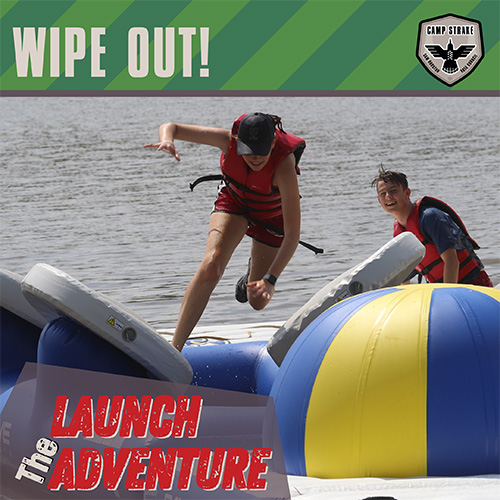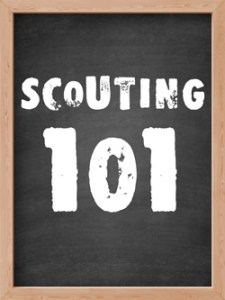August TBD, 2024
Aquatics Day is a weekend event for troops, crews, and ships. Scouts can participate in canoeing, kayaking, paddleboarding, rowboats, swimming in the pool and the obstacle course. Additional program areas will be open. The camp staff provides the program leadership with the support of unit leaders.
Registration
 A unit leader registers the troop. Individual Scouts can attend Saturday only with a parent/guardian who has current YPT training.
A unit leader registers the troop. Individual Scouts can attend Saturday only with a parent/guardian who has current YPT training.
Payments are made online with a credit card or electronic check. Council refund policy.
The registration fee is $25 for each Scout and includes open program areas, lunch, and camp usage fees. The adult fee is $10 and covers lunch and camp usage fees.
Register
Volunteers
The event staff needs certified volunteers (climbing, shooting sports, aquatics, ATV) to increase program availability and expand program options. Additional volunteers are also needed to support the certified volunteers.
Staff Application
Program
Scouts can participate in three 45-minute sessions and one merit badge class on Saturday. When Scouts are not participating in a program area, the troop leadership is responsible for programming in the campsites. Camp staff will provide leadership in the program areas.
Swim Checks
On Friday evening, after Scouts drop off their gear at their campsite, Scouts should change into swimsuits, take a towel and report to the aquatic area. Buddy tags will be issued based on the level of swimming proficiency. Adult assistance is needed to hand out the buddy tags during the swim check.
Swim Checks Prior to the Event. Units may complete their swim checks locally prior to the event following the Swim Classification Procedures or bring documentation of swim checks conducted during summer camp. The unit-level swim check must be conducted by one of the following certified people: Aquatics Instructor, BSA; Aquatics Cub Supervisor; BSA Lifeguard; BSA Swimming & Water Rescue; or other lifeguard, swimming instructor, etc. When swim tests are conducted prior to camp, the camp aquatics director shall reserve the authority to review or retest all participants to ensure that standards have been maintained for the safety of everyone.
Swim Classification Procedures Record and Classifications
What to Bring
Personal Gear* (check with Scoutmaster)
- Field uniform (Scout uniform)^
- Activity uniform (Scout t-shirt)
- Tent and ground cloth
- Sleeping bag, blankets, sheet
- Pillow
- Cot or pad
- Shoes (closed-toe) or hiking boots
- Cap or hat
- Pajamas or sleeping clothes
- Rain gear (pants and jacket)
- Swimsuit and towel (if participating in swimming or boating), water shoes are optional
- Personal items (e.g., deodorant, comb, medications, toothpaste, toothbrush)
- Personal medications: prescriptions (listed on medical form) and over-the-counter, in original containers
- Sunscreen
- Camping gear
- Water bottle
- Insect repellent (non-aerosol)
- Mosquito netting
- Portable chair or camp stool
- Scouts (ages 14+) enrolled in the ATV program have additional items to bring.
|
Troop Equipment
- BSA Annual Health and Medical Record (part A&B for all Scouting events) for every participant
- Trash bags, 55-gallon
- Ice chest
- Troop first aid kit
- Lanterns
- Lockable storage container
- Firewood (if no burn ban)
- Cooking gear and food (for breakfast and dinner; lunch is provided by camp staff)
- Hose, optional
- Hand washing station to put next to the water spigot, recommended (e.g., small bucket, bar of soap)
- Sports equipment, optional (e.g., Frisbee, football, soccer ball, kickball)
|
Optional
- Spending money for trading post (cash, debit, credit)
- Backup phone battery, rechargeable, fully charged
- Fishing pole and bait (worms, corn, jigs, spinnerbaits, crankbaits, topwater lures); hooks must be barbless; catch and release only
|
^The field uniform is not expected to be worn as part of the weekend programming, so check with the Scoutmaster before packing.
*Mark all items with name and troop number. Electricity is limited.
Don’t Bring: Valuables, electronics (e.g., iPad), fireworks, sheath or hunting knives, pets, hammocks, personal firearms and ammunition, jewelry, personal bows and arrows or hammocks
|
Safety
Buddy System
 All Scouts should adhere to the buddy system throughout the camp. Scouting’s buddy system calls for Scouts to pair up with a friend or two for all activities. This helps ensure safety and accountability and teaches Scouts to have responsibility for others. No Scout should ever be found wandering through camp alone. It can be difficult to implement the buddy system when a Scout does not schedule classes with fellow members of their troop. Troop leaders are encouraged to pair Scouts in classes as much as possible. If this is not feasible, the Scout should walk with other Scouts in the class to the location of the merit badge class. Due to the number of Scouts and the short amount of time between classes, this should be a relatively simple exercise.
All Scouts should adhere to the buddy system throughout the camp. Scouting’s buddy system calls for Scouts to pair up with a friend or two for all activities. This helps ensure safety and accountability and teaches Scouts to have responsibility for others. No Scout should ever be found wandering through camp alone. It can be difficult to implement the buddy system when a Scout does not schedule classes with fellow members of their troop. Troop leaders are encouraged to pair Scouts in classes as much as possible. If this is not feasible, the Scout should walk with other Scouts in the class to the location of the merit badge class. Due to the number of Scouts and the short amount of time between classes, this should be a relatively simple exercise.
Scouting Safely
 The BSA's Commitment to Safety is ongoing and we want you to know that the safety of our youth, volunteers, staff, and employees cannot be compromised. The Boy Scouts of America puts the utmost importance on the safe and healthy environments for its youth membership. The Sam Houston Area Council takes great strides to ensure the safety of its youth as well as the adult volunteer leadership that interacts with them.
The BSA's Commitment to Safety is ongoing and we want you to know that the safety of our youth, volunteers, staff, and employees cannot be compromised. The Boy Scouts of America puts the utmost importance on the safe and healthy environments for its youth membership. The Sam Houston Area Council takes great strides to ensure the safety of its youth as well as the adult volunteer leadership that interacts with them.
BSA Guide to Safe Scouting policies must be followed. All participants must follow Youth Protection Guidelines at all Scouting events. Highlights include:
- Two-deep leadership on all outings required.
- One-on-one contact between adults and youth members is prohibited.
- The buddy system should be used at all times.
- Discipline must be constructive.
Health and safety must be integrated into everything we do, to the point that no injuries are acceptable beyond those that are readily treatable by Scout-rendered first aid. As an aid in the continuing effort to protect participants in a Scout activity, the BSA National Health and Safety Committee and the Council Services Division of the BSA National Council have developed the SAFE Checklist of BSA safety procedures for physical activity. These 16 points, which embody good judgment and common sense, are applicable to all activities.
Youth Protection Guidelines Guide to Safe Scouting SAFE Checklist Enterprise Risk Management
Contacts
 Parents of campers should contact their troop leaders with questions about Aquatics Day. Many of the adult leaders attending summer camp are quite experienced and can answer most questions.
Parents of campers should contact their troop leaders with questions about Aquatics Day. Many of the adult leaders attending summer camp are quite experienced and can answer most questions.
For answers not addressed on this page, click here.
Questions and Support